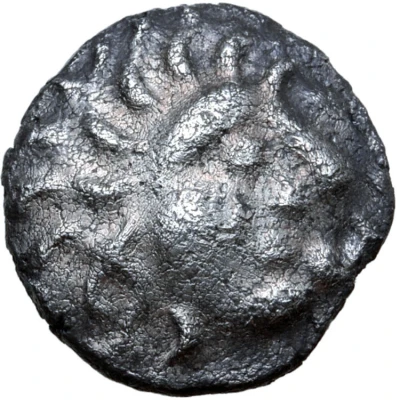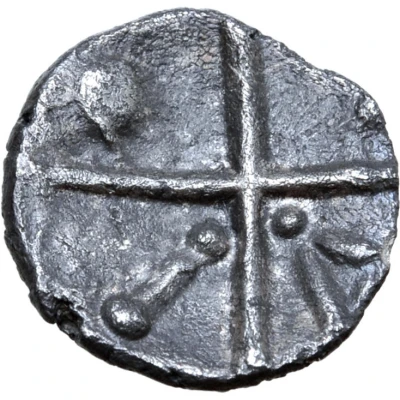


© Roma Numismatics Limited
Quinarius Kreuzquinare Schönaich I Type 100 BC - 50 BC
| Silver | 1.82 g | 10 mm |
| Issuer | Vindelici of Germania |
|---|---|
| Type | Standard circulation coin |
| Years | 100 BC - 50 BC |
| Value | Quinarius (0.5) |
| Currency | Drachm |
| Composition | Silver |
| Weight | 1.82 g |
| Diameter | 10 mm |
| Shape | Round (irregular) |
| Technique | Hammered |
| Demonetized | Yes |
| Updated | 2024-10-10 |
| Numista | N#189327 |
|---|---|
| Rarity index | 100% |
Reverse
Cross with quarters containing Λ - I - sphere and torque; all within cup-shaped incuse
Comment
Kellner, Manching pl. 21, 495;Examples of this type:
• Example #1 (1.82g, 10mm; Good Very Fine):
© Image courtesy of Roma Numismatics Limited
◦ Ex-Hermann Lanz Collection; published in Kostial #24;
◦ Exhibited by the Staatlichen Münzsammlung München at the 1997 International Numismatic Congress in Berlin; at the Berliner Bank also in 1997; also exhibited at the Luitpoldblock Palmengarten, Munich in 2003 (exhibition #11[obverse]);
◦ Auctioned by Roma Numismatics Ltd, Auction XVIII, 29 September 2019, lot 11.
◦ Auctioned by Numismatik Lanz München, Auction 62, 26 November 1992, lot 26.
• Example #2 (1.64g, 14mm; Very Fine):
© Image courtesy of Roma Numismatics Limited
◦ Ex-Hermann Lanz Collection; published in Kostial #25;
◦ Exhibited by the Staatlichen Münzsammlung München at the 1997 International Numismatic Congress in Berlin; at the Berliner Bank also in 1997; also exhibited at the Luitpoldblock Palmengarten, Munich in 2003 (exhibition #13[reverse]).
◦ Auctioned by Roma Numismatics Ltd, Auction XVII, 28 March 2019, lot 12. Estimated at 100 GBP, unsold.
Interesting fact
One interesting fact about the Quinarius coin from Vindelici of Germania is that it features a unique blend of Celtic and Roman influences in its design. The coin's obverse side bears the image of a Celtic warrior, while the reverse side features a stylized Roman eagle, highlighting the cultural exchange and fusion that occurred during the period of Roman expansion into Celtic territories.